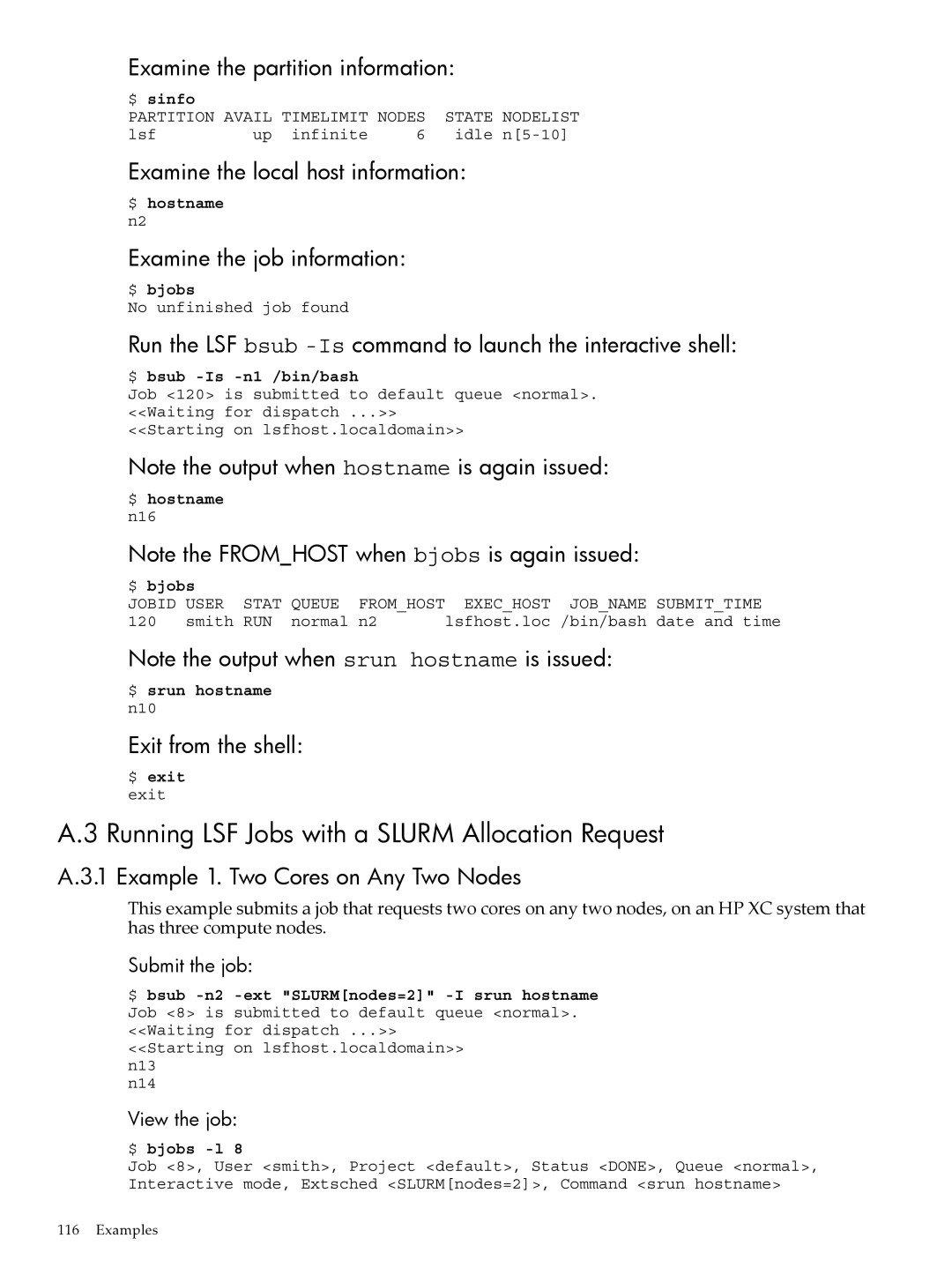Examine the partition information:
$ sinfo |
|
|
|
|
|
PARTITION AVAIL | TIMELIMIT | NODES | STATE | NODELIST | |
lsf | up | infinite | 6 | idle | |
Examine the local host information:
$ hostname n2
Examine the job information:
$ bjobs
No unfinished job found
Run the LSF bsub -Is command to launch the interactive shell:
$ bsub -Is -n1 /bin/bash
Job <120> is submitted to default queue <normal>. <<Waiting for dispatch ...>>
<<Starting on lsfhost.localdomain>>
Note the output when hostname is again issued:
$ hostname n16
Note the FROM_HOST when bjobs is again issued:
$ bjobs |
|
|
|
|
|
| |
JOBID | USER | STAT | QUEUE | FROM_HOST | EXEC_HOST | JOB_NAME | SUBMIT_TIME |
120 | smith | RUN | normal | n2 | lsfhost.loc | /bin/bash | date and time |
Note the output when srun hostname is issued:
$ srun hostname n10
Exit from the shell:
$ exit exit
A.3 Running LSF Jobs with a SLURM Allocation Request
A.3.1 Example 1. Two Cores on Any Two Nodes
This example submits a job that requests two cores on any two nodes, on an HP XC system that has three compute nodes.
Submit the job:
$ bsub
<<Starting on lsfhost.localdomain>> n13
n14
View the job:
$ bjobs -l 8
Job <8>, User <smith>, Project <default>, Status <DONE>, Queue <normal>, Interactive mode, Extsched <SLURM[nodes=2]>, Command <srun hostname>
116 Examples
